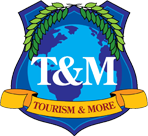Getting a Tourism Management check-up
December 2004
With the end of the summer tourism season and heading into the winter tourism season, the month of November is a great time to give your office a “tourism check-up.” Just as each of us needs a physical medical exam at least once a year, so we need to give our CVB, national tourism office or attraction its own check-up. Here are ten factors to examine. Grade yourselves on each of these factors with a point scale of 1-10 to determine the state of your tourism office’s health. Passing score is a 70, an 80 is good, and a 90 or above means that the state of your tourism program is excellent.
- Do you have a risk management plan? Crisis management may be defined as the failure of risk management. The best way to solve a crisis is to avoid it. Ethically, if we are willing to receive visitors into our collective homes, then we have an obligation to protect our visitors. What types of risk/crisis management plans do you have? Have you identified the risks that most visitors face? Have you created linkages with local hospitals, medical facilities, safe evacuation centers, police and civil defense? How much training in tourism surety (mixture of tourism safety and security) do you professional partner agencies have?
- Do you establish each year a clear mission target? Make sure you know what you want to accomplish and if these are obtainable goals. Too many or unreasonably lofty goals will lead the office to frustration and anger; too few goals lead to a state of ennui and anomie.
- How do you define your operational concepts? Having goals is not enough, there needs to be a method by which you realize these goals. Goal realization is more than a method, it means knowing what is financially plausible and having a set of methods that will permit you to circumvent problems.
- How well do you engage in thorough plannin? All too often we develop visions without plans. Step one is planning is good visioning. In this stage of the process, you should not be thinking about the details but rather about the realizable hopes. Once the visioning stage is completed, then there is a need for detailed planning. Both are part of a thorough and complete planning.
- How well do you work with other agencies, be they private or public? A major problem around the world is organizational jealousy. Too many tourism entities are unwilling to share or tend to forget that there are few restaurants, hotels and even single attractions that are destinations. Destinations are a composite picture of the work of a number of agencies. Tourists and visitors do not care about our personality conflicts, the artificial borders between communities or historical wounds. In a like manner, tourists tend to see the private and public sectors as all part of the travel experience. Tourists come to have a good time and that means leaving our personal egos on the sidelines and learning to work together.
- Is there a clear definition of work responsibilities but at the same time does everyone understand that we are all in customer service? Internally, it is necessary for each staff member to know his/her job and not interfere with his/her colleague’s work. Externally we all have only one job: satisfied visitors. There is nothing that frustrates a visitor more (especially during times of crisis or mishaps) than a person in the tourism industry who refuses to own the problem. A visitor’s problem is always our problem and no matter what we do, it is our responsibility to help solve that problem.
- Do you have an investment and long-term growth plan? Success is good; too much success without a long-range plan can be disastrous. Make sure that there is a plan for growth and development. Is the community establishing some form of architectural harmony? Are you beginning to look like everywhere else? In a recent study of why US visitors are avoiding Europe one of the many reasons given is that Europe now has been “mcdonalized.” That is to say, visitors are noting that Europe is appearing more and more as if it is nothing more than a non-English speaking USA. When planning for growth, do not sacrifice the community’s soul on the altar of making an immediate profit.
- Does the local population understand your tourism goals and does it support the tourism industry’s use of resources? Tourism uses a great deal of local resources, from water to electricity, from road usage to the need for extra security. All of these resource utilizations may be highly justified, however the public has a right to know why they are being used and for what purpose. A tourism industry that is built on a foundation without local support will fail. How do you publicize what you do to the local population? Does the local population understand the importance of tourism and can you show the community how the tourism industry gives back to the community?
- Is your community safe and secure? All too often the tourism community simply assumes that visitors will be safe or relies on incomplete and inaccurate statistics. Most tourists do not report tourism crime, they simply do not return. Tourism surety involves protecting every aspect of the visitor’s experience, from the food that he/she consumes, to his/her safety on the streets, to having a clear and precise plan should there be an act of violence or terrorism. Remember that in the new century only those locales that provide safety, security, and good service will prosper. In a world of terrorism and fear all three of these factors are necessary.



